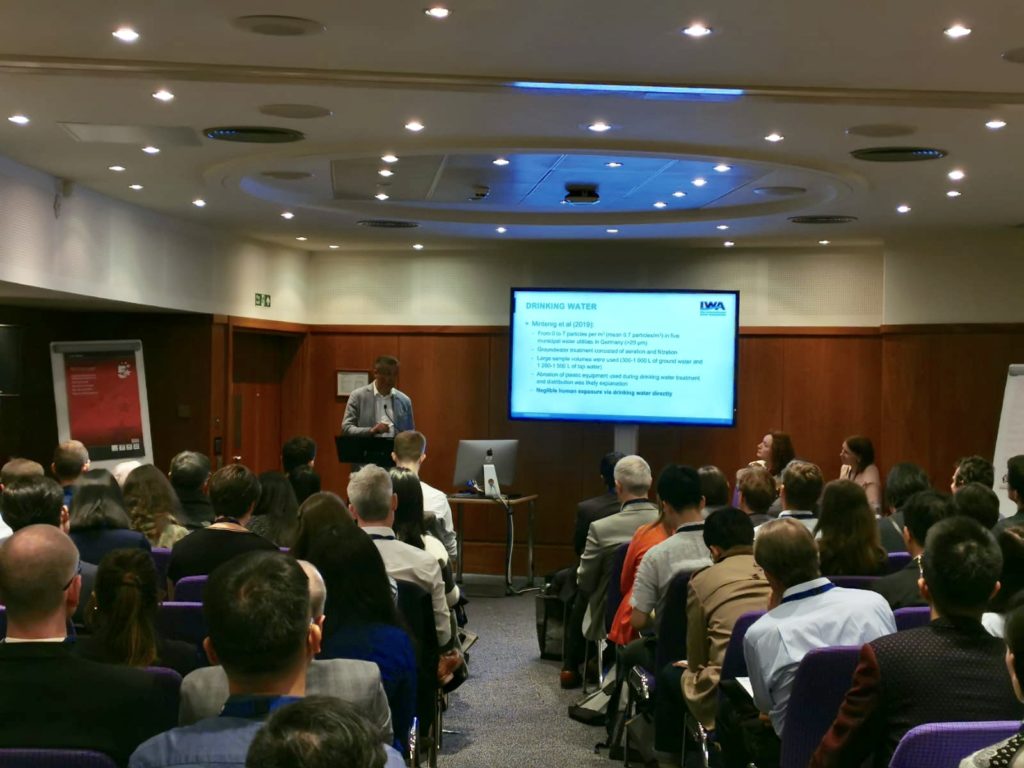Are microplastics a challenge for wastewater treatment?
The plastic problem and the toll it has taken on the world’s ocean ecosphere has been well documented. There are no lack of distressing images shown in the news of the seas strewn with plastic waste, and of sea animals suffocating in it. However, in the past few decades, there has been increased attention on what we do not see.
Microplastics (plastic particles less than 5 millimetres in size,) have been found everywhere: the bottom of the seas and the tops of mountains, in the air that we breathe and in rainwater. But they also run in our wastewaters.
Plastics contains chemicals that are harmful for the environment and can easily bond with various environmental toxins. Because of their small size, microplastics can easily enter the bodies of living things, and we don’t yet have conclusive research on the effects that micro plastics have on ecosystems, or on people’s health.
Most microplastics come from goods that are in daily use such as textiles, plastic packages, cosmetics and car tyres, but they can also be formed when larger plastics break down. It has so far, been nigh on impossible to remove them once they enter the environment so the only way to fight the problem is to either block the source or their travel routes.

Riku Vahala (Aalto University, Finland) presenting current knowledge on microplastics in drinking water at the IWA Leading Edge Conference on Water and Wastewater Technologies, 10 June 2019
Attention has turned to wastewater treatment
Research has indicated that wastewater treatment plants are one of the pathways of microplastics. They can get into the water and soil through both the untreated water and sludge. However, in light of current research we cannot say how great a role they have compared to other pathways, such as urban runoff and waste processing.
Wastewater treatment plants do, however, have the potential for blocking microplastics, and reducing their negative impact on the environment, and the good news is that the technology already exists.
Although the water treatment techniques that are now in use were not originally developed with plastic pollution in mind, they are very effective at removing microplastics. For example, a study conducted at Aalto University concludes that the commonly used activated sludge method removes as much as 99 percent of particles from 20 micrometres to 5 millimetres in size.

Julia Talvitie (Marine Research Center, Finnish Environment Institute, Finland), presenting current knowledge on microplastics in wastewater treatment plants at the IWA Leading Edge Conference on Water and Wastewater Technologies, 10 June 2019
Advanced methods of processing such as various filtering techniques and flotation, make it possible for further improvements. As one example, the study for a membrane bioreactor (MBR), based on membrane filtration technology, removed 99.9 percent of microplastic from the wastewater that had gone through preliminary processing.
So should we demand that all wastewater treatment plants implement these effective methods for removing microplastics? There are also other harmful substances to be considered in wastewater processing such as various nutrients, pharmaceuticals, and suspended solids so treatment plants need to strike a balance.
Research into microplastics is a new area of science that is developing at a great speed, so big advances can still be expected. Wastewater professionals should also be part of the discussion so that they can have access to the latest research-based information, and have the opportunity to influence how the new technologies are developed.
It is also a challenge for researchers to keep up with the pace so just one year is a long period of time in the development of research technology, and the reliability of the results that we get. As this research field is still in its early phase, the research methods have not yet taken root which makes it very challenging to compare research results.
We need to get researchers to speak the same language because that is the only way that we’ll be able to get reliable and comparable results. This can in turn, lead to the development of new technologies and the regulation of microplastics.
Consideration must also be given to the fact that in many parts of the world, wastewater is not treated at all: According to the UN 80% of the world’s wastewater ends up back in nature untreated and even in Europe, there are still areas where wastewater is cleaned with primitive methods.
The efficient processing of wastewater is a significant question in global development. Because of urbanisation and population growth, a growing number of people on a global scale will have access to running water and sanitation. The amount of wastewater will grow, as well as the possibility to tackle the leakage of microplastics and other pollutants into the environment.

